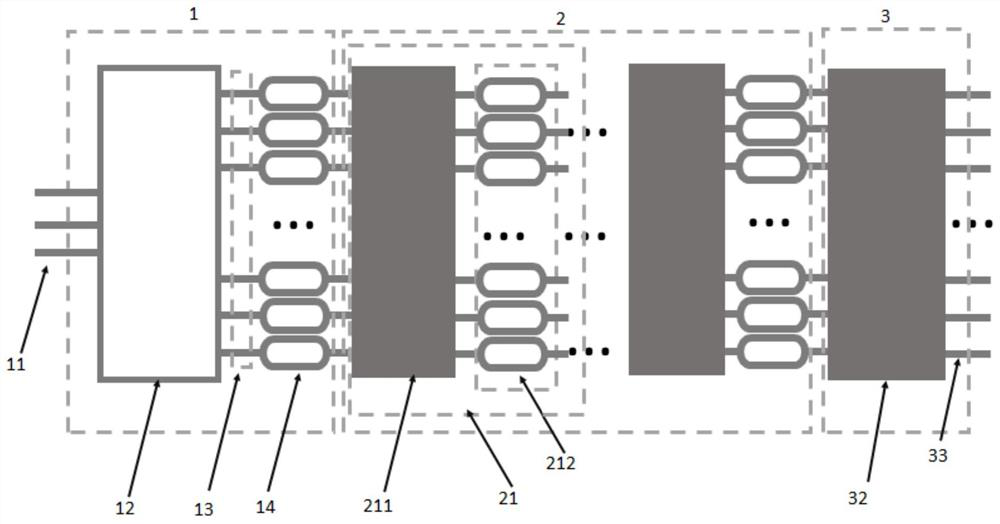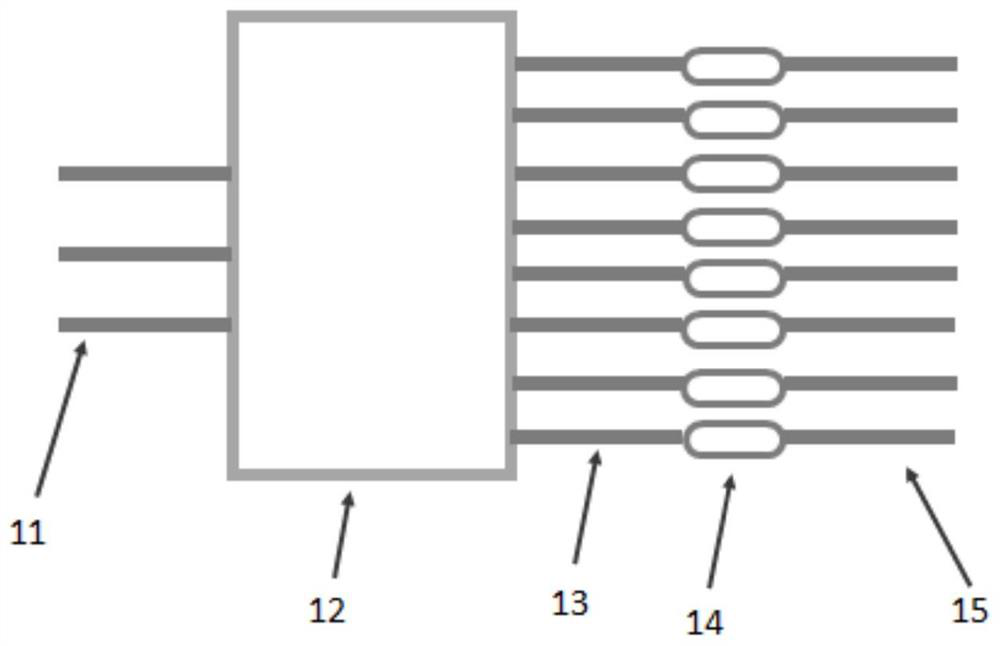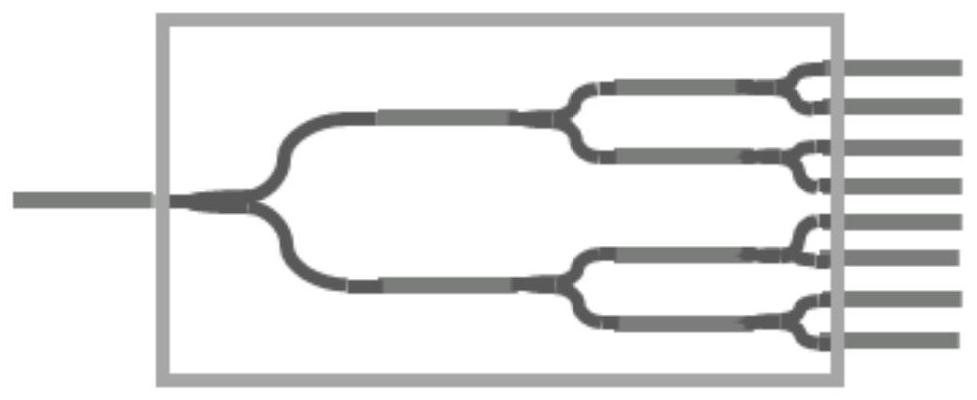All-optical diffraction neural network and system implemented on optical waveguide and/or optical chip
A neural network and light diffraction technology, applied in the direction of optical waveguide light guide, optical waveguide coupling, multiplexing system selection device, etc., can solve the calculation rate and loss limited electrical clock rate and ohmic loss, cascade time Problems such as error amplification and limited scalability can be solved to achieve the effects of improved controllability, good fault tolerance and strong scalability
- Summary
- Abstract
- Description
- Claims
- Application Information
AI Technical Summary
Problems solved by technology
Method used
Image
Examples
example 1
[0074] Such as Figure 11 As shown, the plenoptic diffraction neural network provided in this example has the function of image classification and recognition, and the network structure includes an input layer 1 , a network layer 2 composed of two sub-network layers 21 and an output layer 3 . This optical network structure is realized based on passive integrated optical waveguide. The input layer 1 of this example is composed of an input layer input waveguide 11, an optical splitter 12 (this example is realized by a light diffraction free transmission area), a group of input layer array amplitude-phase modulators 14 (this example is a passive amplitude value modulator, realized by truncating the waveguide) and a set of input layer array output waveguides 15. The coherent light enters the all-optical diffraction neural network from the input port of the input layer 1, and divides 1 path of light into 128 paths of light through the light diffraction free transmission area and ou...
example 2
[0076] Such as Figure 12 As shown, the all-optical diffraction neural network provided in this example has the function of vowel classification and recognition. The network structure includes an input layer 1, a network layer 2 composed of four cascaded sub-network layers, and an output layer 3. This optical network is based on active integrated optical waveguides. In this example, there are two types of length differences between the arrayed waveguides connecting the input layer 1 and the network layer 2, and each sub-network layer, which are 0 μm and 11.2 μm. Among them, the length difference between two adjacent waveguides in the arrayed waveguide between the input layer 1 and the first sub-network layer, the length of two adjacent waveguides in the arrayed waveguide between the first sub-network layer and the second sub-network layer difference, the length difference between two adjacent waveguides in the array waveguide between the 3rd sub-network layer and the 4th sub-...
PUM
 Login to View More
Login to View More Abstract
Description
Claims
Application Information
 Login to View More
Login to View More - R&D
- Intellectual Property
- Life Sciences
- Materials
- Tech Scout
- Unparalleled Data Quality
- Higher Quality Content
- 60% Fewer Hallucinations
Browse by: Latest US Patents, China's latest patents, Technical Efficacy Thesaurus, Application Domain, Technology Topic, Popular Technical Reports.
© 2025 PatSnap. All rights reserved.Legal|Privacy policy|Modern Slavery Act Transparency Statement|Sitemap|About US| Contact US: help@patsnap.com



